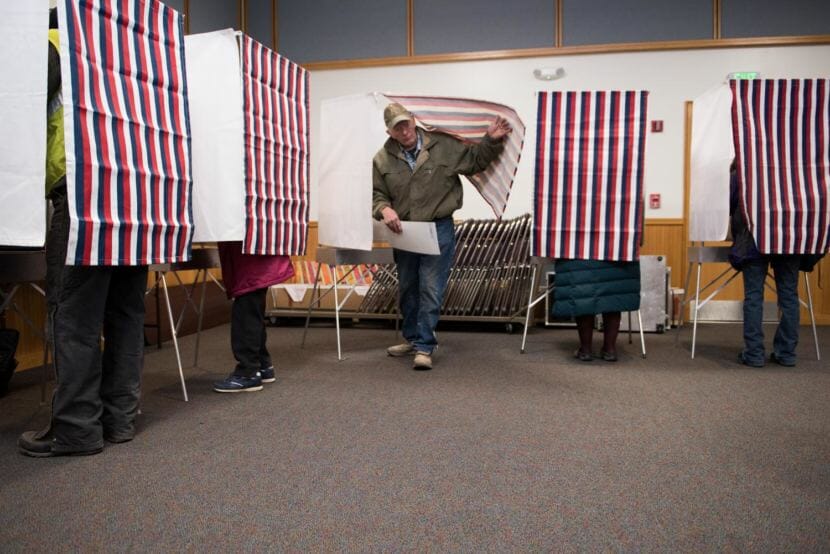
The state’s election equipment and software is outdated.
Along with considering a replacement, state officials are considering a new election system in which many more voters would cast their votes by mail. But rural Alaskans don’t want a system that entirely relies on mail.
A work group that’s advising Lt. Gov. Byron Mallott on election policy met by phone Wednesday to talk about possible changes to the system.
Virgene Hanna of the Institute of Social and Economic Research, or ISER, presented survey results from Southwest Alaska. Residents there prefer the current system, but are open to having the option of voting by mail, once they hear about it.
“Not surprisingly, the more dissatisfied they were with the mail service, the more likely they were to respond that they wanted to keep voting the way it is now,” she said.
Any changes would not happen this year. State officials are aiming to replace the equipment and software by the elections in 2020.
If the new system is like that used by Anchorage this year, all voters would receive their ballots in the mail. They would have a choice whether to return them by mail or take them to a polling place.
The state hired the consulting company Resource Data Inc. to advise the Division of Elections on potential changes to state law to allow more voting by mail. Dennis Wheeler is leading this work.
“Just as an example, currently on the books, there’s a statute that says the division director can hold elections by mail as long as they’re not coinciding the general, the primary or any municipal election, so obviously that’s a hurdle that makes vote by mail not much of an option at this point,” Wheeler said.
State officials said one of their goals is to maximize the accessibility of the voting system. The first Anchorage municipal election that was primarily vote by mail had the highest voter turnout of the past decade.
Division Director Josie Bahnke said the state must replace its outdated equipment. She said any change to the current voting system must work well across the state. That’s why the state asked ISER to survey Southwest Alaska.
“One of the guiding principles of the group is that if it doesn’t work for rural Alaska, then it won’t work for Alaska,” she said. “And so we’ve been very cognizant of that.”
The overall cost of replacing the election equipment and software is $4.8 million. The state has received a $3 million grant from the federal government to replace them.
